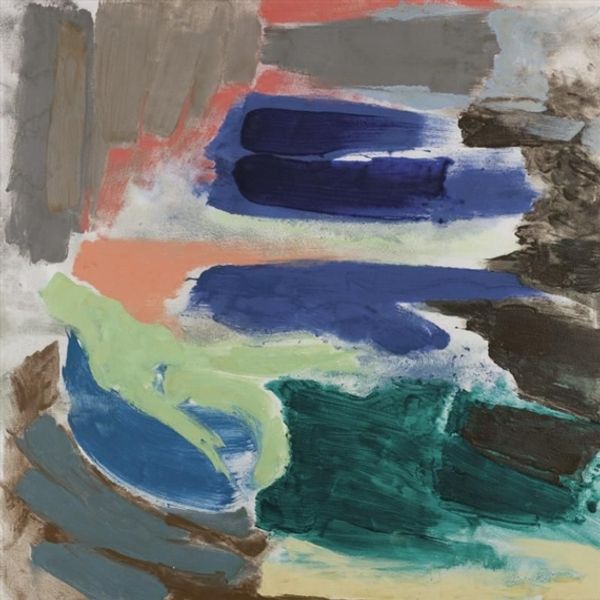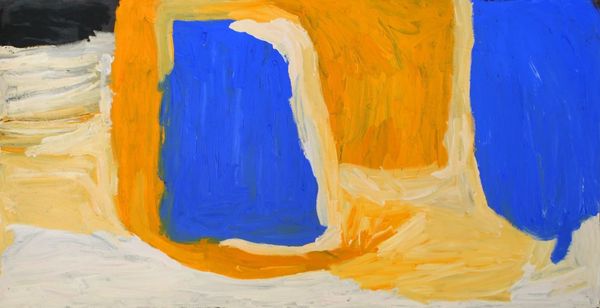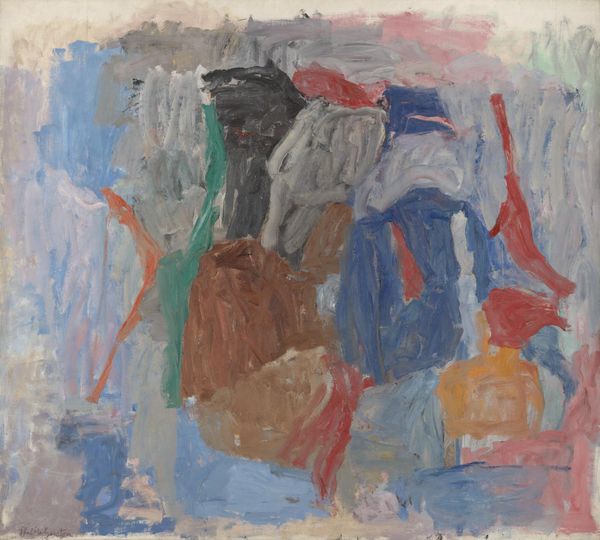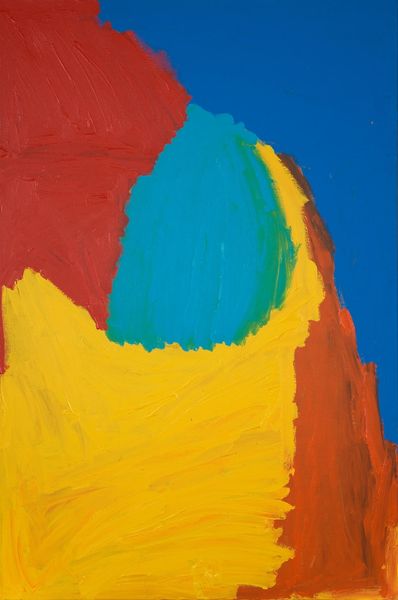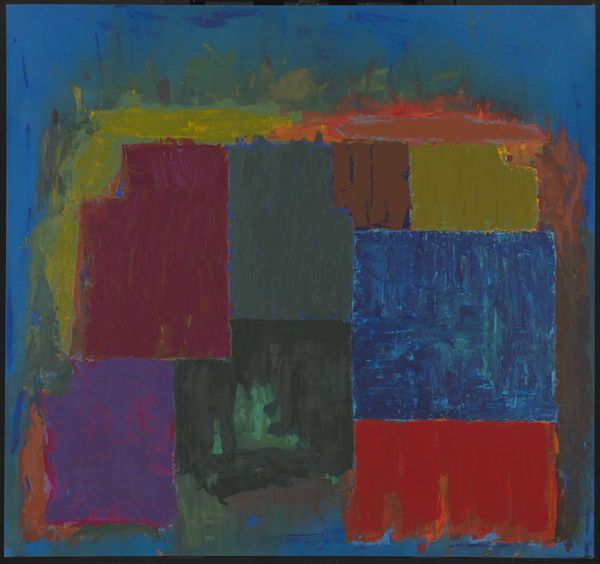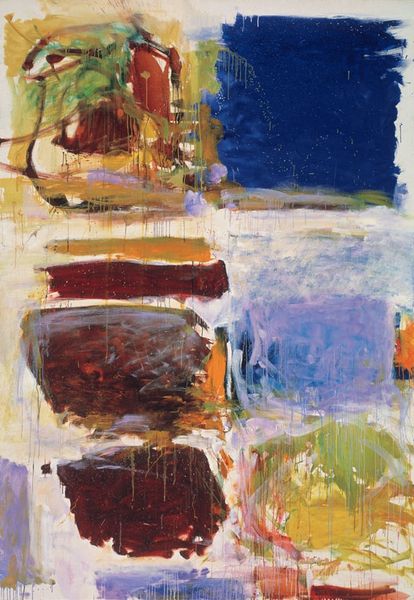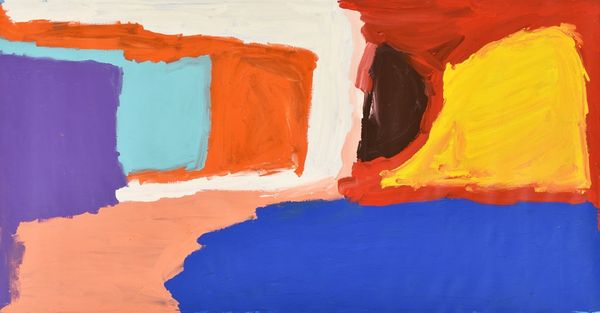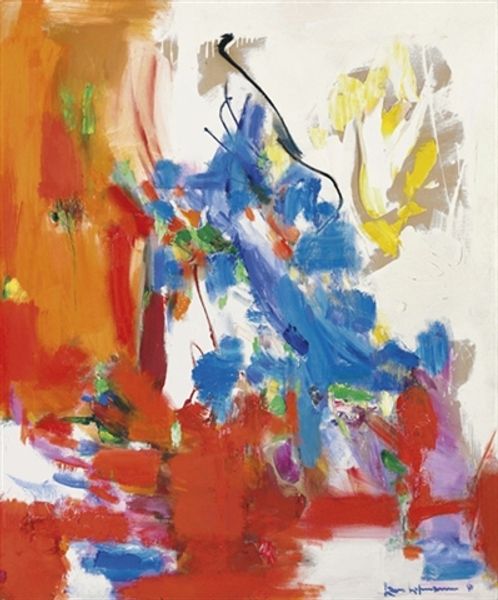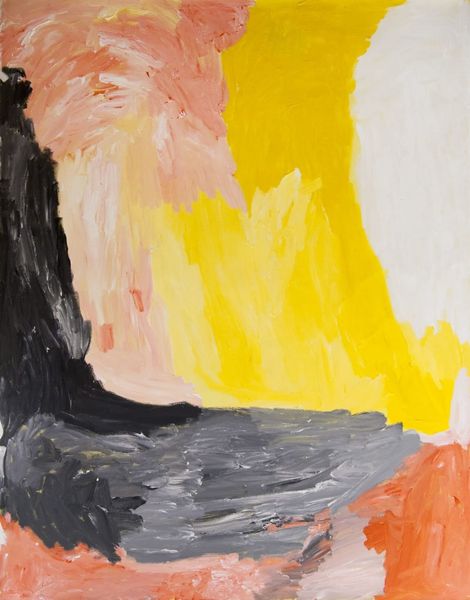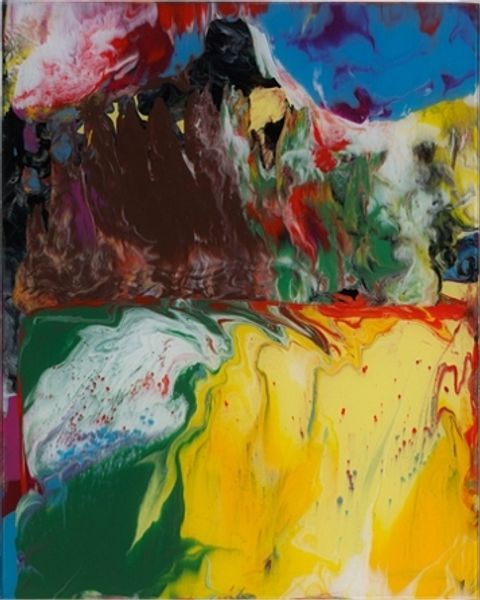
Copyright: Friedel Dzubas,Fair Use
Editor: This is Friedel Dzubas’ "Hope Distant" from 1987, made with acrylic paint. The bold colors are so striking. I’m curious, what's your take on this seemingly hopeful, but also somber, abstraction? Curator: The title "Hope Distant" certainly frames our perspective. The artwork reflects anxieties and aspirations during the late 1980s, and can be seen as a visual metaphor for a world grappling with social and political complexities. Think of it as a response to the Reagan era, the escalating AIDS crisis, and growing environmental concerns. Do you see how the impasto technique gives it a visceral, almost anxious quality? Editor: I do. The layering of paint really emphasizes the colors and adds texture. It feels raw. Curator: Precisely. This rawness allows us to interpret the emotional and socio-political landscape. Consider how Dzubas, influenced by color field painting, uses these expansive fields of color, to provoke emotional and intellectual engagement. The title might suggest a hope that feels just out of reach. How does the juxtaposition of darker tones and brighter highlights contribute to your interpretation? Editor: It's like the dark colors are weighing down the brighter ones, maybe a reference to real-world burdens, like the social and political turmoil, impacting optimism. The gray seeping through also feels oppressive. Curator: Right! Now, how might we connect the personal sense of hope in the face of difficulty represented by the art with that time's feminist and intersectional movements, battling for rights and recognition in these uncertain conditions? Editor: It speaks to the power of resilience; even with "Hope Distant", these communities found the strength to resist the status quo and pursue that hope. Curator: Exactly, understanding the historical context lets us see "Hope Distant" not just as an abstract painting, but as a profound social commentary. Editor: That's a compelling perspective. It adds so much depth to how I see abstract art, moving it from pure aesthetics to meaningful cultural dialogue.
Comments
No comments
Be the first to comment and join the conversation on the ultimate creative platform.
